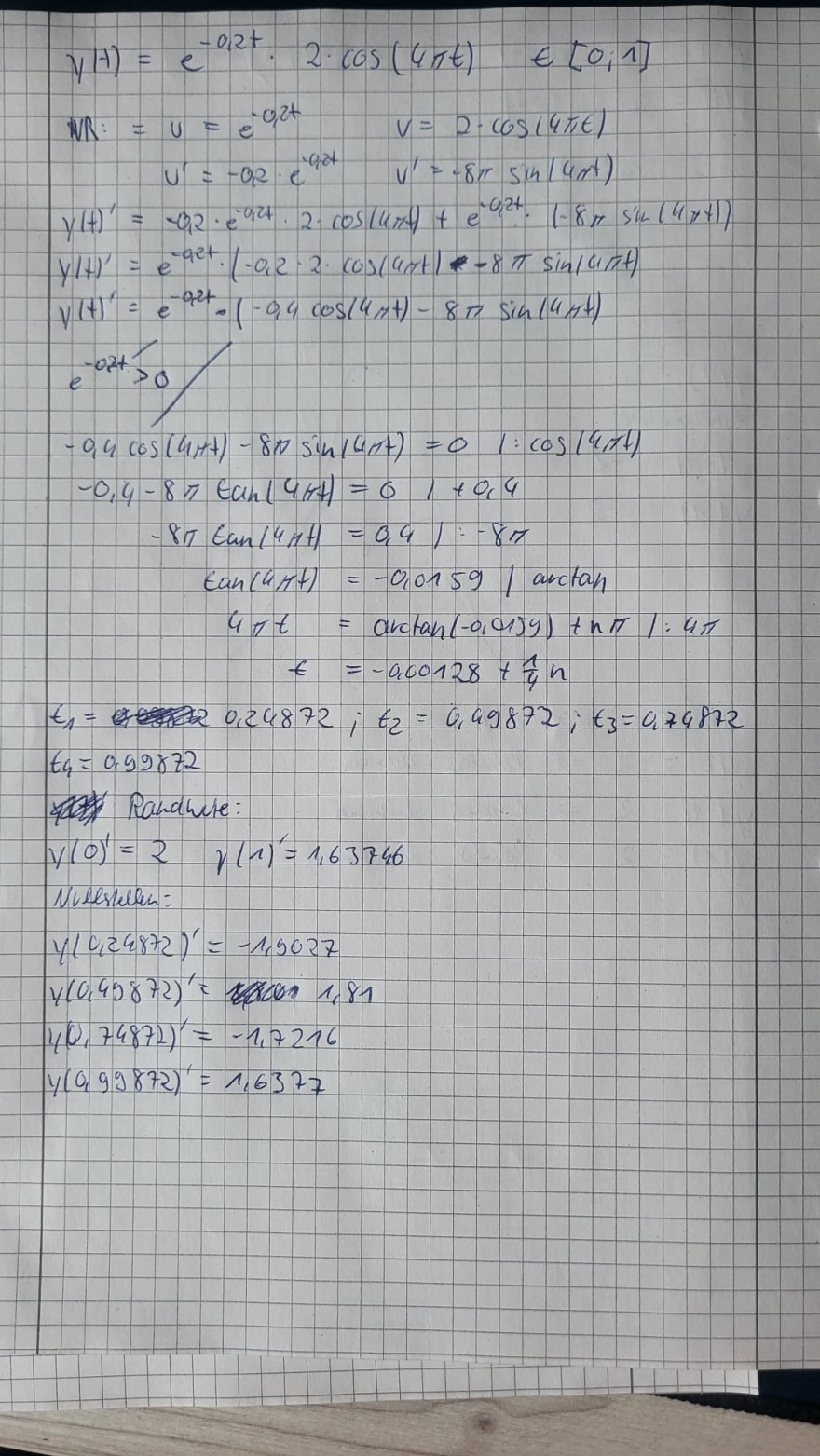Aufgabe:

Text erkannt:
\( \begin{array}{l} y(H)=e^{-0,2 t} \cdot 2 \cdot \cos (4 \pi t) \quad t[0 ; 1] \\ N R:=v=e^{-0,2 t} \quad V=2 \cdot \cos (4 \pi t) \\ v^{\prime}=-0,2 \cdot e^{0,2 t} \quad v^{\prime}=-8 \pi \sin (4 \pi t) \\ y(t)^{\prime}=-0,2 \cdot e^{-0,2 t} \cdot 2 \cdot \cos (4 \pi t)+e^{-0,2 t} \cdot(-8 \pi \sin (4 x t)) \\ y / t)^{\prime}=e^{-a t t} \cdot(-0,2 \cdot 2 \cdot \cos (4 \pi t)-8 \pi \sin (a \pi t) \\ V(t)^{\prime}=e^{-0,2 t}-(-0,4 \cos (4 \pi t)-8 \pi \sin (4 \pi t) \\ e^{-02 t}>0 \\ -0,4 \cos (4 \pi t)-8 \pi \sin (6 \pi t)=0 \quad 1: \cos (4 \pi t) \\ -0,4-8 \pi \tan (4, H t)=01+0,4 \\ -8 \pi \tan (4 \pi t)=0,4):-8 \pi \\ \tan (4 \pi t)=-0,0159 / \arctan \\ 4 \pi t=\arctan (-0,055)+n \pi \mid: 4 \pi \\ \epsilon=-0,00128+\frac{1}{4} n \\ t_{1}=0,24872 ; t_{2}=0,49872 ; t_{3}=0,74872 \\ t_{q}=0,99872 \\ \end{array} \)
Randucte:
\( y(0)^{\prime}=2 \quad v(1)^{\prime}=1,63746 \)
Nulestellen:
\( \begin{array}{l} y(0,24872)^{\prime}=-1,9027 \\ y(0,49872)^{\prime}=88001,81 \\ y(0,74872)^{\prime}=-1,7216 \\ y(0,99872)^{\prime}=1,6377 \end{array} \)
Problem/Ansatz:
Gibt es bei dieser Aufgabe eine einfache Möglichkeit die lokalen minima/maxima zu bestimmen? Der Dozent aus meiner Vorlesung hat an einer anderen ähnlichen aufgaben das so bestimmt: 
Nun frage ich wie man darauf kommt das so machen zu dürfen? Vorallem weil die erste Ableitung von der e-Funktion hier nichtmal stimmt? Eine explizite erklärung würde hier mir echt weiterhelfen. LG